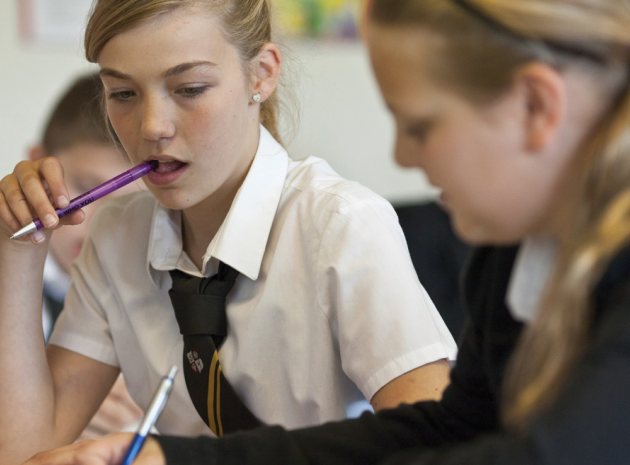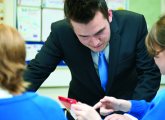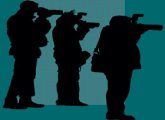Noadswood School’s Edwina Stephenson describes how an innovative new curriculum is allowing students to set the course of their own learning journey.
Noadswood School, located close to the shore of Southampton Water is a specialist sports college with just over 1000 pupils. While sporting participation and excellence is very much at the heart of our school’s mission, developing ICT has also been a core objective. Increased funding for ICT has boosted the use of technology across all curriculum areas and allowed us to implement a pioneering Enquiry Based Learning (EBL) programme within the humanities department. Navig8 is a bespoke curriculum created by the school, based on the principles of enquiry and project based learning. The project encourages pupils to take more responsibility for not only what they learn, but how they learn it. We subscribed to Clipbank, the cross-curricular digital learning service for secondary schools, just over a year ago and the resource has since become an integral tool for lesson planning and delivery, as well as delivering the Navig8 curriculum.
Navig8 was born out of a desire to ensure that our pupils have the tools they need to learn effectively, and equip them with the essential skills they need to meet the demands and expectations of the 21st century jobs market. We had become increasingly aware that it is impossible to teach pupils everything they will need for the future, particularly when most of the knowledge and theories don’t even exist yet. What we could do, however, was help students to ask the right questions, follow through an enquiry and teach them how to research effectively to achieve the most effective learning outcomes.
Navig8…in a nutshell
The principles behind the Navig8 project and EBL are that in addition to the knowledge that teachers impart to students, learners also need to be equipped with the skills that ensure they will continue learning for the rest of their lives. The school’s commitment to this teaching and learning style led to the creation of a new, Year 7 humanities curriculum.
Our Year 7 pupils still follow the normal curriculum in their other lessons, however, during humanities curriculum time, (history, geography and religious studies) students pursue the Navig8 curriculum, which equates to five hours per week. In Years 8 and 9, pupils study more traditional history, geography and religious courses, having been equipped with the skills they need to be successful. The curriculum involves students choosing topics that really interest them and researching relevant information to support this learning. The teachers adopt more of a coaching role, supporting the students’ learning journey by providing structure, while still allowing them to explore independent learning.
Each term pupils explore a different concept. They still have some subject-specific ‘taught’ lessons to equip them with the necessary knowledge to be able to explore these themes, while staying close to the syllabus. This allows them to generate their own sub-questions as a result of further research in their groups. At the end of each term, their work is publicly showcased. In the autumn it is placed on our school website, with a compilation of the best work being collated into a magazine that is sent to our partner school Sefoloko, in South Africa and High Tech High in San Diego for review. It is a great way of building relationships with schools in different parts of the world and learning from each other.
Getting started
Before we set out on this exciting journey, we had to make sure that our teachers were on board; in order to implement the new curriculum effectively our humanities specialists would need to liase together to develop lessons that were appropriate for the individual needs of their classes. Luckily, our teachers could see the potential of Navig8 and were keen to be involved. They received professional training from Bristol University, Waitrose and the Beyond Partnership. They were also involved in a two-week collaboration with High Tech, a school recognised globally for its outstanding project based learning curriculum.
We ensured that we had a Navig8 computer suite available for pupils to use and that all classes had lessons in the library so that pupils would have readily accessible resources. The department also has access to Nintendo DS learning games and Busby video cameras as well as a page on the Noadswood VLE dedicated to Navig8.
Clipbank has been particularly helpful in implementing Navig8 by enabling students to follow a train of thought or topic area and create student-led learning paths. The cross- curricular nature of the video content is also valuable for Navig8 project work and presentations. Currently, students are working on a variety of projects on different communities including the Aztecs and Native Americans. Much of the learning material is from Clipbank content and students are being tasked with preparing a presentation on their project in front of teachers and school governors. Clipbank is helping our pupils to demonstrate critical thinking and creativity whilst helping to sharpen their research and ICT skills.
A work in progress
Allowing students the choice to direct their learning has had a positive impact on their enjoyment of school as they’ve felt more personally connected to their work and motivated to learn. However, this doesn’t mean that the traditional sage role of the teacher has become redundant in these classes. Some of the tasks which helped students understand how to be successful also saw some feel lost in a cycle of reflection and requiring help and guidance from teachers.
“Navig8 was born out ofa desireto ensure that our pupils have the tools they need to learn effectively and equip them with the essential skills they need…”
The gap between realisation and application was, and remains, arguably the most important discovery for our Navig8 staff. Students are capable of some highly reflective, honest thinking in terms of the learning process. They understand, for example, the impact of positive and negative ‘learning relationships’ on their progress. Students can explain eloquently why it would be a bad idea to work with a particular friend and argue with conviction why a researcher must not rely completely on the internet. However, our experience demonstrated that having made such realisations, students were sometimes prepared to ignore their findings and failed to apply them to the learning processes they chose.
EBL and project-based learning (PBL) have provided an outstanding opportunity for us to engage parents in their children’s learning. Projects are outcome-orientated and focus on students taking pride in their work, as they create impressive outcomes centred on a topic or theme which can be showcased publicly. They enjoy sharing their hard work with their parents, and parents in turn relish being a part of their children’s school life.
Students were recently put into groups of 10 to 15 and each team was asked to create a class magazine entitled ‘What makes the south unique’? Students wrote features and reports on Glastonbury, Stonehenge, the Jurassic Coast and WWII to name but a few, and included fantastic supporting images and illustrations to bring the magazines to life. We now have eight, 24-page, wonderfully unique and interesting magazines proudly on display, reflecting the hours of hard work and dedication that the students and teachers have put in. Results like this encourage even more ‘buy-in’ from teachers, students and parents, which has already been very positive.
Going forward
Every year the Navig8 projects get more ambitious and I’m always impressed with the quality and professionalism of the students’ presentations. The curriculum has enabled students
to engage on their own learning journey, apply their knowledge, and collaborate with the teachers on establishing learning objectives. Digital resources like Clipbank have been integral in providing the students with more independence when it comes to researching and acquiring knowledge.
Our story is continuously evolving; at the moment it is difficult to imagine an ending. As each term progresses our understanding of our students, and the pedagogy that underpins Navig8, develops.
We have expanded on some key ingredients for anyone wishing to embark on a more skills-based approach to learning and I would be happy to share these with any school thinking of introducing Navig8; you can contact me directly at Noadswood School, or visit tinyurl.com/bstwtry to find out more.
What they say
Wow! wow!!! wow! it’s going to take some time for me to absorb this all. I am blown away! Let your students know, from the perspective of a southern californian, the magazine looks really inviting – the topics call my attention. i’m so excited to get my hands on a copy!”
Bobby Shaddox, High Tech High
About the expert
Edwina Stephenson is a history teacher and navig8 coordinator at Noadswood school.
For more information on clipbank, visit clipbank.channel4lear ning.com or call +44 (0) 20 7870 4500.











Noadswood School’s Edwina Stephenson describes how an innovative new curriculum is allowing students to set the course of their own learning journey.